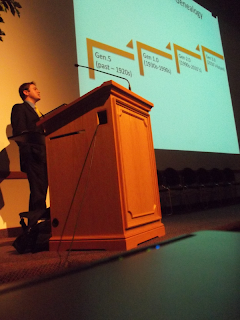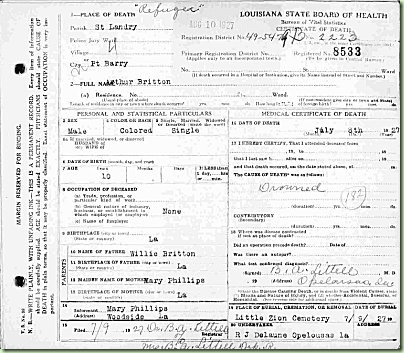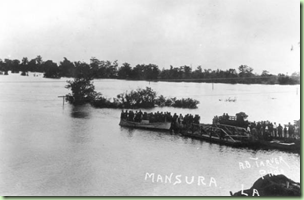I’ve been writing about the Social Security Death Index (SSDI) for the past several weeks:
And I should warn you that I digress into a tirade against FamilySearch because of 40 years of pent up frustrations. I apologize to current decision makers who I think “get it.”
Suggested Citations
I expect more from a professional genealogist than from a hobbyist. In this review I’m going to nitpick details that you don’t need to worry about. Ancestry.com and FamilySearch have a responsibility to create your citations. That’s a major reason why I am not pulling any punches.
FamilySearch should provide citations to its SSDI collection and to individual records. I think they should look (similar to those I proposed for Ancestry.com) like this:
How to Cite This Record (full reference note):
1. “U.S. Social Security Death Index,” database, FamilySearch (http://www.FamilySearch.org : accessed 12 July 2011), entry for Donald N. Sider, 322-26-3895; derived from U.S. Social Security Administration, Death Master File, database (Alexandria, Virginia: National Technical Information Service, 30 June 2011).
How to Cite This Record (shortened reference note):
2. “U.S. Social Security Death Index,” FamilySearch, entry for Donald N. Sider, 322-26-3895.
How to Cite This Collection (Bibliography):
“U.S. Social Security Death Index.” Database. FamilySearch. http://www.FamilySearch.org : 2011. Derived from U.S. Social Security Administration. Death Master File. Database. Alexandria, Virginia: National Technical Information Service, 24 July 2011.
You Too Can Fix FamilySearch’s Citations
As I write this, FamilySearch supplies this citation on the SSDI collection page:

Collection citation from the SSDI collection page
As I understand it, the citation is automatically copied from the wiki for display on the collection page.

Collection citation from the wiki page
If you don’t like it, you can “fix it” in the collection’s wiki article, “United States Social Security Death Index (FamilySearch Historical Records).” I need to write an article or two explaining how that works and how one goes about fixing something in the Wiki. It’s a bit like being the first bird in a flock to react to a predator. If you are going to fix it, you better do it fast. There is talk of pulling the citation from some internal place. But I digress…
Bibliography/Source List
This citation has numerous problems that you could fix.
- Identification. If this citation is not of the source of the collection, why title it “Sources of Information for This Collection?” FamilySearch should identify these citations as how to cite the entire collection.
- Bibliography punctuation. Elements in a bibliography (source list) citation are separated by periods. (It’s as if the citation is a paragraph and each element is a sentence.) Elements in reference notes are separated by commas (as if the citation is a sentence).
- Source of the source. FamilySearch failed to provide an adequate source-of-the-source citation. This is especially sad, given the title.
- Repository. No repository need be given for publications. For printed publications, the only time I would specify the repository is if the publication wasn’t listed in WorldCat.org. That’s the only time. Uh… I guess the other only time would be if I were quoting an annotation someone had written into a particular published book. (Penciled corrections and additions to family histories used to be an acceptable practice.)
Listing the Family History Library as a repository is not only unnecessary, it is untrue.
The Internet is a publishing mechanism. FamilySearch’s record collections are published works. The information comes to your computer screen from a farm of computer servers which can be anywhere on the planet.
Where is the repository serving up FamilySearch’s record collections? Jay Verkler once told me and a bunch of other bloggers not to tell you that they were thinking of establishing a second vault someplace. It was not to be the kind that you hollow out of a mountain, but an electronic one. It would give FamilySearch a second, redundant location for the FamilySearch.org website. Oops. Did I say that out loud.
Well as long as I’m in trouble…
There are newspaper accounts of a server farm in the Granite Mountain Record Vault, but I don’t recall if Verkler said it is the home of the FamilySearch.org website. There are accounts on FHCNET that FamilySearch has a server farm in Virginia, but I don’t recall Verkler mentioning it. There was a RootsTech session stating that parts of the FamilySearch.org lives in “the cloud.”
The point I’m leading up to is that while I don’t know where it is—the repository that houses FamilySearch.org’s Social Security Death Index—I know it isn’t the Family History Library.
One good thing I want to point out is FamilySearch’s use of the term “from” to set off the source-of-the-source citation. I like the little prepositions that Chicago Manual of Style uses to connect parts of a citation.1
Reference Note
 Record citations from the wiki page
Record citations from the wiki page
FamilySearch does not provide citations to its records. This is critical. Hobbyists rarely use any other citation type. Citations can be extremely easy for users if the vendor would make it so. Instead, FamilySearch provides an example with a sloppy typo (the lack of a space after a period and before an uncapitalized “entry.”
I’ve used FamilySearch products from way before they were called FamilySearch and their inattention to sources is epoch.
- Microfilm: Unique citations not consistently captured.
- Family group sheets (early): no space for citations.
- Four generation program: miniscule space for optional citations.
- Individual and marriage entry forms: citations discarded (not keyed).
- PVRL: discarded.
- PAF (early): no citation support.
- GEDCOM: lossy citation exchange.
- FHLC: incorrect citations for hierarchical archives.
- Ancestral File: citations discarded from patron submissions.
- TempleReady: sources made optional and discarded if present.
- Pedigree Resource File: citations discarded before online publication.
- new FamilySearch Tree (NFS): no source management.
- NFS (early): sources specified nothing besides the date the information was loaded.
- NFS (early): citation entry takes longer than login timeout.
- NFS: sources optional, although the tree is intended for collaboration.
- NFS: can’t exchange sources with desktop tree managers.
- NFS: IGI source information (meager as it is) discarded.
- NFS: for members of the Church of Jesus Christ of Latter-day Saints, no sources are given for ordinances (even though NFS replaces the IGI as the official repository of this information).
- FamilySearch.org: record collections are published without source coverage.
- FamilySearch.org: records don’t have citations.
- FamilySearch.org: printouts don’t have citations.
- FamilySearch.org: images don’t have citations.
- FamilySearch.org: copy to clipboard doesn’t include citations.
Decade after decade, product after product, new decision makers arrive at FamilySearch, treat sources as an afterthought, sometimes making irreversible blunders. About the time they finally get that genealogy is harder than it looks and that sources are genealogy, they move on. It’s genealogical maturity. It’s the chasm. It’s frustrating beyond belief.
But I digress…
Scorecard
| Requirement | Meets Requirement? |
| Citations meet professional standards | Almost. A for effort. |
| Provides citations for published collections | Yes, but mistitled as “Source Information” and “Sources of Information for This Collection.” |
| Provides citations for individual records | No. |
| Citations to published collections distinguished from citations to collection sources | Yes. |
| Citations indicate source-of-the source | No. |
| Record citations contain information necessary to locate the cited records | No record citations are provided, but the suggested example contains the necessary information and more. I wouldn’t bother including birth date. |
| Record citations contain information necessary to locate archive originals | Again, no record citations are provided, but the example contains the necessary information, the social security number. |
| Reference notes and Source list entries are labeled accordingly | No. |
The final score for FamilySearch is 2 yeses, 5 nos, and 1 tirade.
UPDATE: Since seeing my article, FamilySearch has substantially improved the citations in the Wiki. They’ve asked that I reiterate that everyone is invited to contribute to the FamilySearch Wiki.
Sources
1. The Chicago Manual of Style 15th ed. (Chicago: The University of Chicago Press, 2003; CD-ROM version 1.2.3), 662 (“in”), 666 (“by”), 667 (“of”).


 Dennis E. Simmons, immediate past president of the Family and Church History Mission at the headquarters of
Dennis E. Simmons, immediate past president of the Family and Church History Mission at the headquarters of 

















